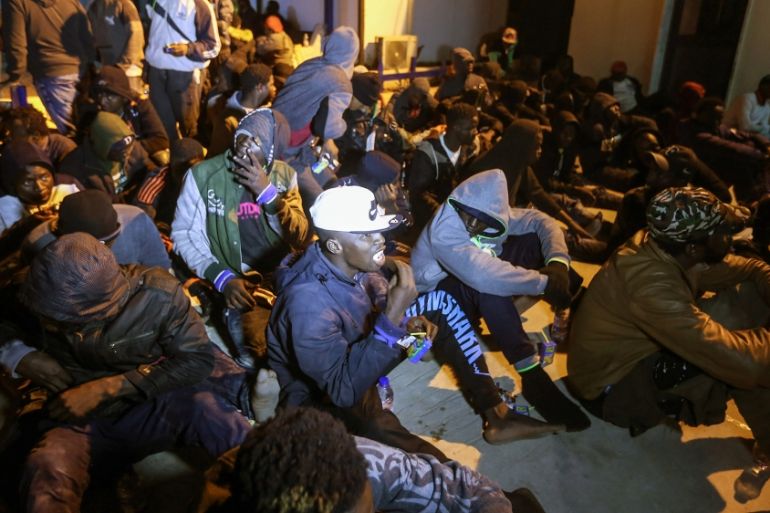Migrant in Libya relives brutal detention through sketches
Libya’s migrant detention centres are rife with abuse and have got caught in the crossfire of the country’s civil war.

A guard withholds water from a barefoot migrant kneeling in front of him. An emaciated man lies on the ground while a thermostat reads a broiling 43C (109.4F). Refugees cower to the ground as bullets whiz by.
These rough pencil sketches by an Eritrean refugee offer a glimpse of the brutal reality of Libya’s migrant detention centres, where thousands have been locked away for months or even years.
Keep reading
list of 3 itemsQ&A: ‘Complete disregard for migrants dying on the Mediterranean’
Refugees or hijackers? Teenagers charged with terrorism in Malta
Most are there after failing to make the perilous crossing to Europe through the Mediterranean Sea.
The artist asked to only be identified by his nickname, Aser, because he fears reprisals from militias for speaking out about what he says are “nightmare conditions” inside the centres.
In a country with no functioning government, it is often competing militias who run the detention centres and make money off migrants.
Drawing his pain: An Eritrean migrant identified only by his nickname, Aser, because of fears of reprisals from Libyan militias, relives some of the “nightmare conditions” he witnessed inside the country's detention centers through his sketches. https://t.co/9eDkjgmkxF
— AP Middle East (@APMiddleEast) December 31, 2019
The drawings are based on what Aser, 28, witnessed inside several migrant facilities in Tripoli between September 2017 and October this year.
At night, he recalls, he woke up to the sounds of militiamen dragging migrants from their sleep and beating them to get ransoms from their families, mostly in sub-Saharan Africa.
Guards withheld food, water and medicine for the same reason.
Libya’s migrant detention centres are rife with abuse and many have gotten caught in the crossfire of the country’s civil war.
One drawing depicts refugees in the crossfire between forces of renegade military commander Khalifa Hafter and militias allied with the UN-recognised government in Tripoli.
Libya became a major crossing point for migrants to Europe after the death of longtime dictator Muammar Gaddafi in 2011, but Europe now sends money for Libya to prevent migrants from reaching its shores.
With increased reports of torture and abuse inside detention centres, Europe’s policy of supporting the Libyan coastguard as it intercepts fleeing migrants has come under growing criticism.
Aser says that often, the only drinking water available inside the hangars where he was kept was a few buckets of water for hundreds of people.
He and others went weeks without seeing sunlight, and the crowded centres became breeding grounds for disease.
At the last facility where he was held, Abu Salim, he and another migrant, who also spoke on condition of anonymity, said two Eritreans died from what they believed to be tuberculosis.
Aser’s journey began more than four years ago, when he escaped military conscription in Ethiopia, considered among the world’s most repressive governments.
He made his way through Ethiopia and Sudan, and paid $6,000 to traffickers in Libya to secure a place on a boat to Europe. But the vessel was intercepted by the Libyan coast guard.
He ended up in Tripoli in September 2017 and was placed in the first of three centres. Visiting workers from Doctors Without Borders, or MSF, provided him with pencils and paper, and he worked out of the sight of guards.
He sometimes hid the drawings and took photos of some sketches before destroying them.
In late October, Aser fled to an already overcrowded UN-run facility with hundreds of other detainees.
Now, he hopes he will be one of the few to qualify for asylum, who are put on flights via Niger and Rwanda to Europe.
In the meantime, he says, his only escape is art.
“I dream that one day I can move out of Libya to develop my skill by gaining additional education,” he said.
|
|